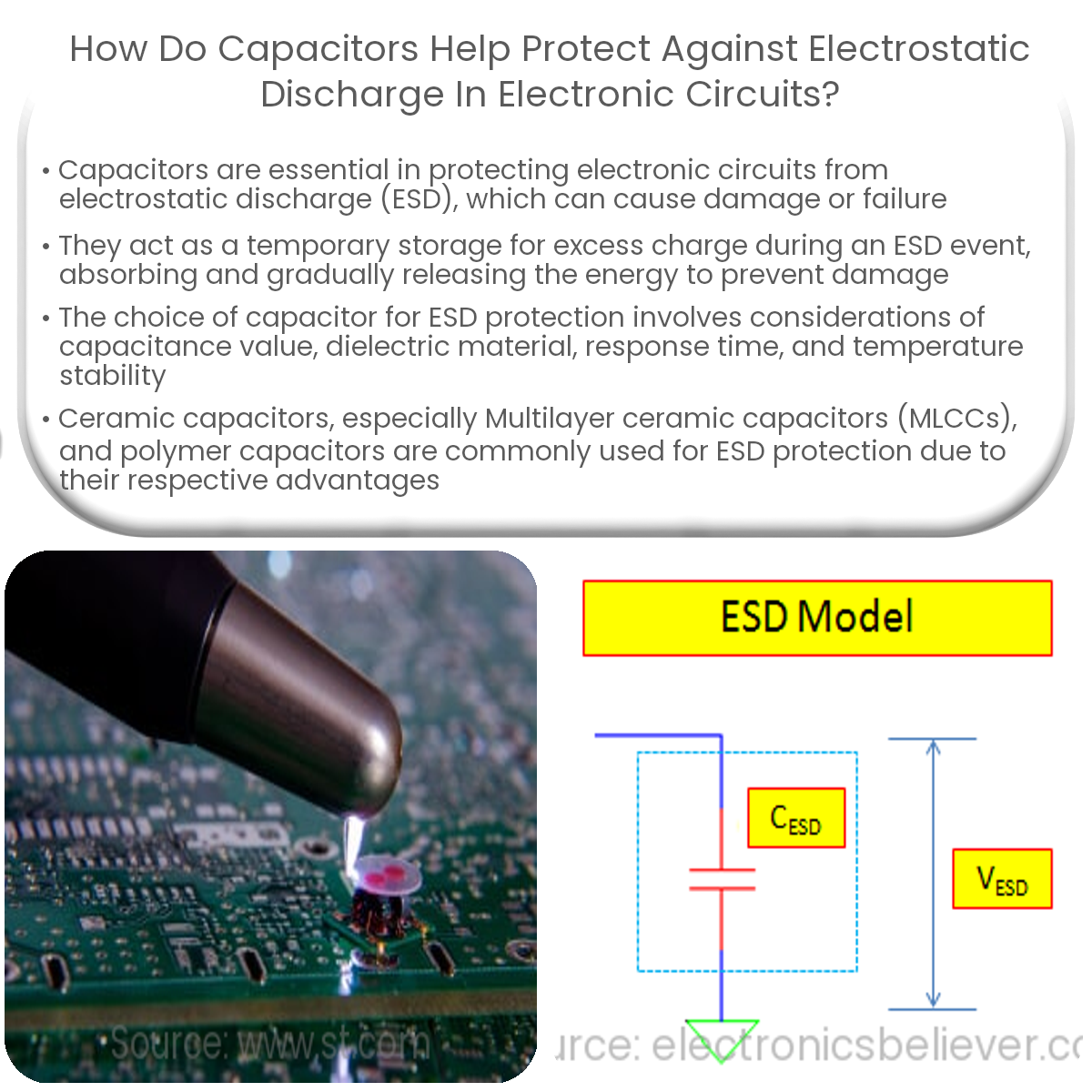Capacitors protect against ESD by absorbing excess charge, preventing it from reaching sensitive components, and then gradually releasing the energy.
Capacitors as ESD Protectors
Electrostatic discharge (ESD) is a significant concern in electronic circuits, as it can cause damage or failure to sensitive components. Capacitors, with their unique properties, play an essential role in protecting against ESD in electronic circuits.
How Capacitors Work
Capacitors are passive electronic components that store electrical energy in an electric field. They consist of two conductive plates separated by a dielectric material, which prevents the flow of direct current (DC) between the plates. Capacitors can store and release energy quickly, making them ideal for various applications, including ESD protection.
ESD Protection Mechanism
Capacitors help protect against ESD by acting as a temporary storage for the excess charge generated during an electrostatic event. When an ESD event occurs, the capacitor absorbs the excess charge, preventing it from reaching sensitive components within the circuit. The energy stored in the capacitor is then gradually released, dissipating the charge and minimizing the risk of damage.
Choosing the Right Capacitor
Several factors must be considered when selecting a capacitor for ESD protection. These include:
Common Capacitor Types for ESD Protection
There are several types of capacitors commonly used for ESD protection:
In conclusion, capacitors play a crucial role in protecting electronic circuits against electrostatic discharge. By selecting the right type and specifications, capacitors can effectively minimize the risk of damage to sensitive components, ensuring the reliable operation of electronic devices.


